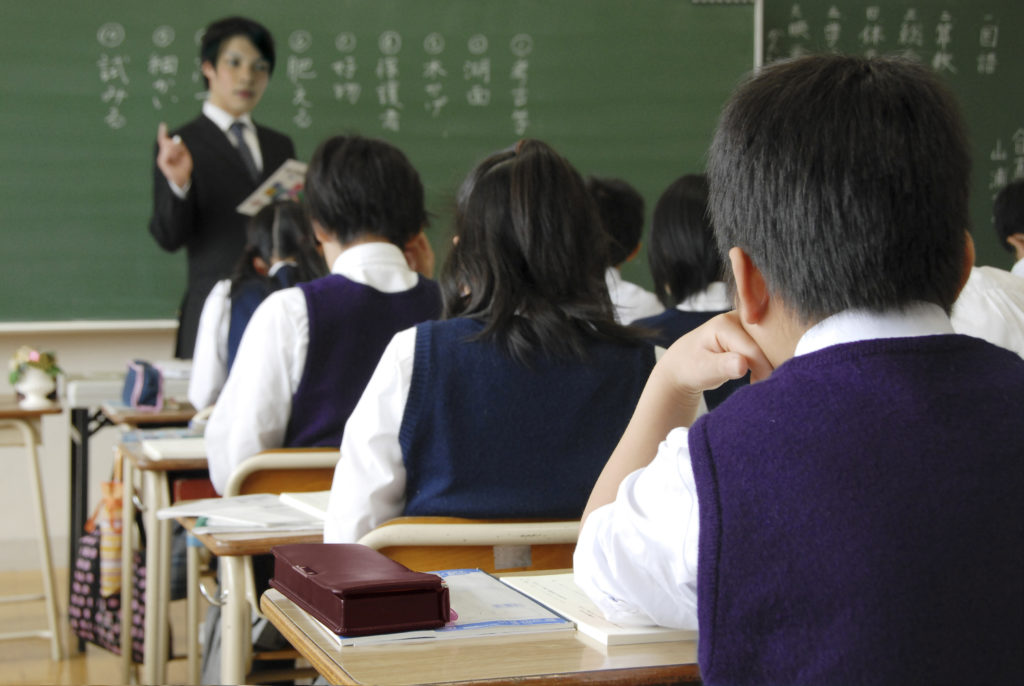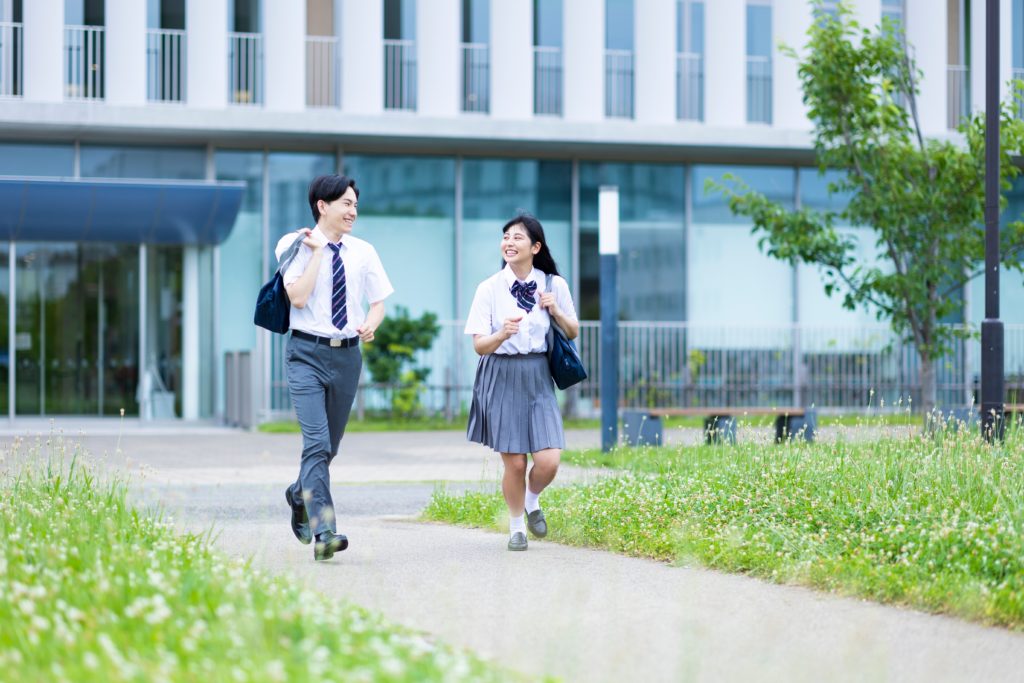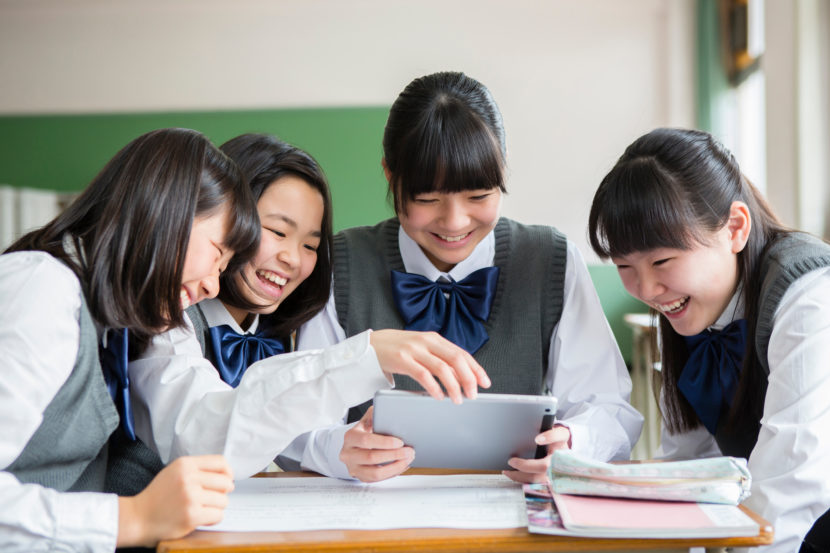A new chapter has begun in Japan’s educational history: high school education is now free for all students, regardless of household income. This landmark reform, effective since April 2025, stems from a historic parliamentary agreement and is expected to have far-reaching implications for students, their families, and the nation’s future. It marks a transformative moment for children’s rights and educational equity in the country.
Japan’s new tuition-free high school educational policy
Japan’s new educational policy guarantees universal access to high school by eliminating tuition fees for all students in public schools. Beginning in April 2025, every student enrolled in a public high school will receive a government subsidy of ¥118,800 (approximately $800), fully covering annual tuition (Sheppard, 2025).
Support for students in private high schools will also be significantly expanded. Starting in April 2026, income caps on subsidies will be lifted, and government assistance will increase to approximately ¥457,000 (around $3,000) per student annually (Tochibayashi & Ota, 2025). This assistance will cover most tuition fees and give families a broader range of educational choices.
“With free tuition, private schools are now a real option.”
– A parent commenting on the impact of the new tuition-free policy (News On Japan, 2025)
The reform replaces a means-tested system that excluded many households earning above ¥9.1 million (roughly $60,000) annually and posed bureaucratic obstacles, particularly for children from immigrant families, low-income backgrounds, and families with unstable income (Sheppard, 2025). The policy aims to reduce inequality and promote more widespread access to education by removing both financial and administrative barriers.
A milestone in educational equity
Japan’s decision to make high school education free constitutes a major step towards fulfilling the country’s obligations under the Convention on the Rights of the Child (CRC), which it ratified in 1994. The CRC, in Article 28, requires states to ensure that secondary education is “available and accessible to every child” and to progressively make it free of charge. This reform brings Japan into compliance with its international commitments and reflects a renewed national dedication to providing equitable educational opportunities.
The COVID-19 pandemic exposed disparities within Japan’s education system. Despite strong performances in international assessments such as the Programme for International Student Assessment (PISA) and the Trends in International Mathematics and Science Study (TIMSS), government data reveal a clear link between household income and university enrolment. Children from wealthier families and metropolitan areas such as Tokyo and Osaka tend to have greater access to higher education. Those from lower-income or rural backgrounds often run into more hurdles (Tochibayashi & Ota, 2025).
The policy addresses these regional disparities, as some areas, such as Tokyo and Osaka, previously offered more subsidies than others (The Mainichi, 2025). This reform guarantees equal access to free high school education across the country (Asia Education Review, 2025).
How free high school tuition benefits students and families
High school tuition has long been a significant financial burden for many families. According to the Ministry of Education, total costs – including tuition fees, uniforms, and other miscellaneous expenses – can amount to around ¥1.5 million (approximately $10,000) per student throughout high school (Allen, 2025). This burden particularly affects single-parent households and families with multiple children.
These high costs are especially alarming given that, as of July 2023, 11.5% of children – about one in nine – lived in relative poverty (Zenbird, n.d.). Historically, school fees and related expenses have been major hindrances for children from low-income households, trapping families into cycles of poverty and restricting their opportunities.
Recognising these challenges, Japan’s new educational policy aims to increase attendance and completion rates and reduce dropout risks linked to financial hardship. In doing so, it supports children’s development by ensuring that every student has a fair chance to pursue their educational and personal goals (Sheppard, 2025).
In addition, the reform promotes greater social inclusion by removing income thresholds and simplifying subsidy applications. It benefits children from immigrant, marginalised, and socio-economically disadvantaged backgrounds who previously faced financial and bureaucratic barriers (Sheppard, 2025).
The policy also supports families with unstable incomes or those overwhelmed by complex administrative procedures and helps ease the financial strain of child-rearing – a pressing concern in Japan’s ageing society (Shiga, 2025; World Half Full, 2025).
Putting children at the heart of the educational reform
The reform reflects priorities expressed by Japanese youth, including a strong desire for free education. A 2023 survey of children aged 10 to 18 identified free education as a top policy concern (Nippon.com, 2023). Hence, this policy demonstrates respect for children’s views – a core principle of the CRC.

Additionally, advocates call for continuous monitoring to enable all children – and not only those in affluent or urban areas – to fully benefit from the reform. Key concerns include non-tuition expenses and the reform’s impact on enrolment patterns in public versus private schools, as well as the overall quality of education (The Mainichi, 2025).
Addressing persistent obstacles to equity in high school education
Ensuring true accessibility is still a huge challenge. While tuition fees are now covered, families continue to struggle with the high costs of uniforms, school supplies, transport, and extracurricular activities. Child rights advocates emphasise the need for extra support to cover these hidden costs so all students – especially those from low-income families – can fully take part in school life.
The disparities between public and private schools in Japan are another issue. In trial areas such as Osaka and Tokyo, enrolment in public high schools has reduced, with some schools running below capacity. This trend towards private education raises concerns about growing inequality. Private schools may raise their fees to take advantage of increased government funding, which could undermine the reform’s goal of equal access.
Moreover, maintaining the implementation of this policy will require steady funding. It costs over ¥500 billion (about $4 billion) every year (Shiga, 2025). How long it will last depends on political and public support as well as clear and fair budget management. Some critics are calling for more open discussions on how the reform will be funded and what it means for education as a whole (The Mainichi, 2025; The Yomiuri Shimbun, 2025).
Quality and motivation also matter. Free tuition should spark more serious conversations on how to keep the standard of education high and students engaged – not just serve as a political promise. If the goal of the proposal is to enhance education, the parliament should examine how free education can support all students’ growth and sustain their motivation to learn (The Yomiuri Shimbun, 2025).
Finally, Japan’s ageing population and falling birth rate add extra pressure. The number of students has dropped by around 700,000 in the past 20 years. The government views free high school education as one way to ease the cost of raising kids and to help support families as part of a bigger plan to address the country’s demographic decline (Shiga, 2025).
Strengthening Japan’s free high school education policy
Advocates urge the government to enshrine free high school education in the Fundamental Law on Education, protecting it from future political changes. While omitting tuition fees is an important step, addressing the remaining gaps – such as improving access for recent immigrants and other marginalised groups – is equally crucial. At the same time, ongoing discussions focus on how to support well-rounded student development and motivation beyond simply removing financial hurdles.
Alongside this policy, policymakers are exploring additional reforms such as expanding free school meals and boosting support for early childhood education in Japan. These efforts are part of a broader strategy to improve both access to and the quality of education. Initiatives include extending free meals to younger students.
By 2023, around 30% of municipalities were offering free lunches to all students in junior high schools and public elementary schools (Nippon.com, 2024). More recently, there has been investment in digital learning tools to reduce regional disparities. Consequently, ongoing monitoring will be essential to ensure all children benefit fairly from these measures.
To make the tuition-free policy truly effective, Japan must also maintain and upgrade public school facilities to handle the increased demand. Additionally, careful planning is necessary to handle the rising demand for private schools while ensuring that social inequality is not exacerbated, especially with challenges such as fewer births and school closures.

Humanium, a global children’s rights organisation, advocates for universal access to free and quality education without any financial or social barriers. Join us in amplifying children’s voices and promoting inclusion to build a fairer future in which every child can learn, grow, and thrive. Support us by volunteering, sponsoring a child, or donating today.
Written by Or Salama
References:
Allen, J. (2025, February 23). Polls: Japan approves of free high school for all. Retrieved from Unseen Japan at https://unseen-japan.com/free-high-school-japan-approval/, accessed on May 28, 2025.
Asia Education Review. (2025, April 14). Free high school tuition set to roll out across Japan in 2025. Retrieved from Asia Education Review at https://www.asiaeducationreview.com/others/news/free-high-school-tuition-set-to-roll-out-across-japan-in-2025-nwid-3783.html, accessed on May 29, 2025.
News On Japan. (2025, April 4). Japan’s tuition-free high school program expanded nationwide. Retrieved from News On Japan at https://newsonjapan.com/article/145302.php, accessed on May 26, 2025.
Nippon.com. (2023, May 19). Japanese Children Want Child Policies to Focus on Free Education. Retrieved from Nippon.com at https://www.nippon.com/en/japan-data/h01667/, accessed on June 18, 2025.
Nippon.com. (2024, December 24). Free School Lunches Provided in 30% of Japanese Municipalities. Retrieved from Nippon.com at https://www.nippon.com/en/japan-data/h02220/, accessed on June 18, 2025.
Sheppard, B. (2025, April 1). Japan Makes High School Education Free – Again. Retrieved from Human Rights Watch at https://www.hrw.org/news/2025/04/01/japan-makes-high-school-education-free-again, accessed on June 6, 2025.
Shiga, Y. (2025, May 16). Japan to subsidize private high schools as public system creaks. Retrieved from Nikkei Asia at https://asia.nikkei.com/Spotlight/Policy-Asia/Japan-to-subsidize-private-high-schools-as-public-system-creaks, accessed on June 5, 2025.
The Mainichi. (2025, February 22). Editorial: Japan high school tuition waivers are no subject for political games. Retrieved from The Mainichi at https://mainichi.jp/english/articles/20250222/p2a/00m/0op/004000c, accessed on June 5, 2025.
The Yomiuri Shimbun. (2025, February 22). Making high school education free: Debate on educational effects not taking place. Retrieved from The Japan News at https://japannews.yomiuri.co.jp/editorial/yomiuri-editorial/20250222-240086/, accessed on June 5, 2025.
Tochibayashi, N., & Ota, M. (2025, April 24). How Japan is bridging its learning gaps to ensure education is fully democratic. Retrieved from World Economic Forum at https://www.weforum.org/stories/2025/04/japan-education-learning-gaps/, accessed on June 14, 2025.
World Half Full. (2025, May 1). Japan makes high school free – again. Retrieved from World Half Full at https://www.worldhalffull.com/post/japan-makes-high-school-free-again, accessed on June 14, 2025.
Zenbird. (n.d.). Child poverty in Japan. Retrieved from Zenbird at https://zenbird.media/child-poverty-in-japan/, accessed on June 18, 2025.


